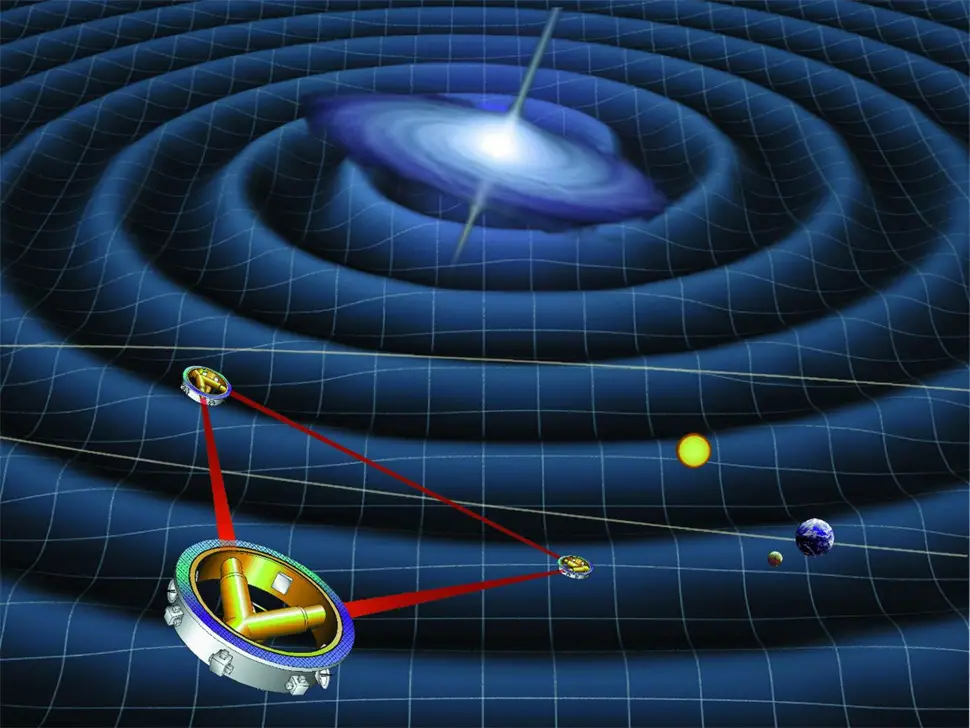
22nd June 2017 Gravitational wave observatory to launch in 2034 The European Space Agency (ESA) has confirmed the Laser Interferometer Space Antenna (LISA) as the third large-class mission in its future science programme, with launch planned for 2034.
A trio of satellites to detect gravitational waves has been selected as the third large-class (L3) mission in ESA's Science programme. In terms of its area and dimensions covered, the Laser Interferometer Space Antenna (LISA) will be the largest man-made structure ever put into space – with each "side" of its triangle stretching across millions of kilometres – forming a giant observatory to probe the Dark Side of the Universe. In 2013, the "gravitational universe" was chosen as the theme for a future ESA mission. This would be designed to search for ripples in the fabric of space-time created by celestial objects with extremely strong gravity, such as pairs of merging black holes. Gravitational waves were predicted a century ago by Albert Einstein's general theory of relativity, but remained elusive until very recently, when the first direct detection was made by the ground-based Laser Interferometer Gravitational-Wave Observatory (LIGO). That signal, announced in February 2016, was triggered by the merging of two black holes some 1.3 billion light-years away.
Since then, two more events have been detected and a follow-up study, LISA Pathfinder, has demonstrated that observations can be made in space – not just with ground-based instruments. This precursor mission will conclude on 30th June, after sixteen months of science operations, which have tested key technologies needed for the more advanced LISA in the 2030s. Space-based operations will provide major advantages: • no need to create an artificial vacuum, since the vacuum of space is free and better than anything that can be simulated in a lab; To detect and measure gravitational waves from distant astronomical sources, a phenomenal level of sensitivity is required. Using laser interferometry over its trio of 2.5 million kilometre arms, LISA will track relative displacements with a resolution of 20 picometres – 1/50 billionth of a metre – less than the width of a helium atom. It will look for ripples in space-time with periods ranging from a few minutes to a few hours. Several thousand objects are expected to be resolved within the first year of operation. In addition to studying black holes and compact binaries, LISA will probe the expansion of the universe and the gravitational wave background created during the early universe. It will also look for currently unknown (and unmodelled) sources of gravitational waves. History in astrophysics has shown that whenever a new frequency range/medium of detection is available, new and unexpected sources show up. This may, for example, include kinks and cusps in cosmic strings. Following its selection, LISA will now enter a more detailed phase of design and costing, before construction begins. Its launch is expected during 2034 and the mission lifetime is four years – but the spacecraft will have enough power and orbital stability to potentially last until 2044.
---
Comments »
|







